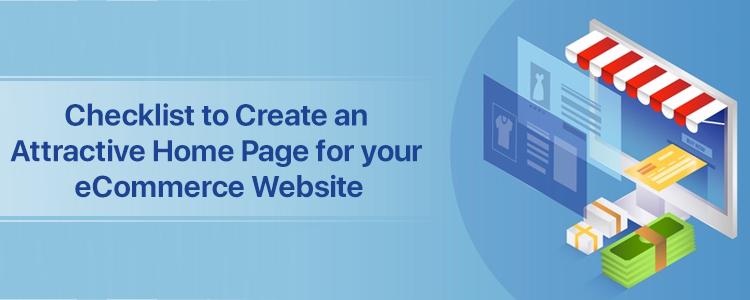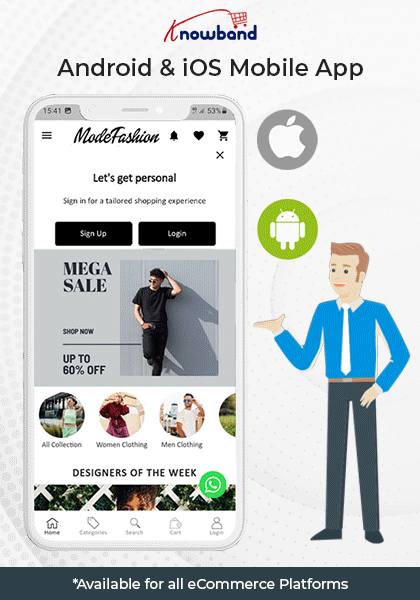Your homepage is the interaction point for web visitors. Not only it introduces your brand to the users but also marks the beginning of their journey on the website. Put simply, it navigates your visitors and customers to different places (web pages) on your website.
As we say “First impression is the last impression,” it perfectly suits in case of a homepage. If your homepage doesn’t leave a good impression on the very first time a user lands on your website, it is very unlikely they will proceed further. They will bounce off straight away and may never return.
Whether the purpose of your home page is to capture email subscribers, get conversions or sell products, it should leave a strong first impression.
What are the ways to design an appealing homepage? Well, there are multiple ways to do it and different eCommerce websites have different ideas. However, there are some important tips to consider when designing your homepage.
Before you design your Homepage-
A particular homepage might do exceptionally well for one business while it may fall flat for another. So before you make up your mind of designing the homepage, ask yourself a few questions.
What call-to-action do I want visitors to take?
How many steps does it require?
How much information do they need to provide before they could move towards the next step?
How simplified can it be made?
Can some steps be eliminated?
Make your primary goals and work accordingly.
On average, a visitor spends nearly 10-20 seconds on a webpage. Considering this, the duration can be further reduced if your homepage fails to impress web visitors.
What this tells is you only have a few seconds to leave a positive impact on visitors about your brand. The navigational flow should be clear enough to encourage users to explore other areas of your eCommerce website.
Although you would want your potential customers to stick around, decision avoidance should be prevented. Decision avoidance is the tendency of humans when they fail or take too long to make a decision. This could lead to visitors bouncing off from your website or hitting the back button.
Let’s now take a look at some tips that could prove helpful in designing your ideal homepage.
1. Purpose-Driven Content
Your homepage should straight away speak about your niche, products or services when users land on your website. Before they begin scrolling, the primary purpose should be served right in front of them.
If you are providing a service, there should be a complete focus on it along with how users can get facilitated by it. The homepage content should persuade visitors to take action and this is why a compelling call-to-action should be placed on the homepage for that matter.
Displaying such content also confirms users that they are in the right place as the information served to them helps them identify what they are looking for.
2. Easy Navigation
One of the most important things to look at while designing your homepage is the navigation bar. It should be as straightforward as possible consisting of only important navigation links. The fewer the better as too many navigation options can clutter the homepage and hamper the user experience. An ideal navigation bar should not have more than seven links.
You should also look to create sub-navigation parts (displays in drop-down menu) if your website has too much content. This narrows down the navigation path for users and helps them reach the desired page quicker.
It is also recommended to add a search box or simply a magnifying glass to the navigation bar. Some websites also have the Contact Us and About Us page at the navigation bar but it will look better only if you are displaying only a few options else it is ideal to put them at the footer.
3. Eye-Catching Visuals
Images are an integral part of a homepage. They catch user attention more than anything. If visuals aren’t appealing, other things would hardly matter.
Make sure to pay a lot of attention to the visuals while designing your homepage. They should immediately reflect the purpose and as you would know, “A picture is worth a thousand words.”
What visuals should you incorporate on your homepage? You can try using Images with text overlay, slideshows, image carousels, or you can add a video too if you want. Images should be attractive and should match with your website’s overall design.
4. Shopping Cart
Adding the cart section on your homepage which is visible throughout the website makes a good homepage design. You can find this on many eCommerce websites. Even the eCommerce giant Amazon has a shopping cart on their home page and can be accessed from any web page.
Displaying the number of items in the cart keeps reminding customers that they have an incomplete purchase, and encourages them to checkout.
5. Testimonials
Highlighting testimonials is among the best practices to design a homepage. They are powerful and make your brand look trustworthy. The curiosity to explore your website and do business with you increases when visitors find out how satisfied your clients or customers have been with your offerings or services.
Make your home page more appealing with Instagram Shop Gallery
Instagram Shop Gallery not only enhances your homepage but also provides you with an opportunity to boost your sales. The module creates an Insta Gallery section on your homepage and also places the page link on the header navigation.
Using this module, you can fetch photos from Instagram using specific hashtags and tag your products on it, making it similar to Instagram shoppable posts. Instagram Shop Gallery module is available for PrestaShop, OpenCart, Magento and Magento 2.
Final Thoughts
Simplifying your homepage and keeping it attractive at the same time is what attracts visitors the most. And this should not only be focused on the desktop. A majority of the website traffic comes from mobile devices today. So make sure your homepage looks as appealing on a mobile as it looks on a desktop.
That’s it in my checklist of designing a homepage for an eCommerce website.



